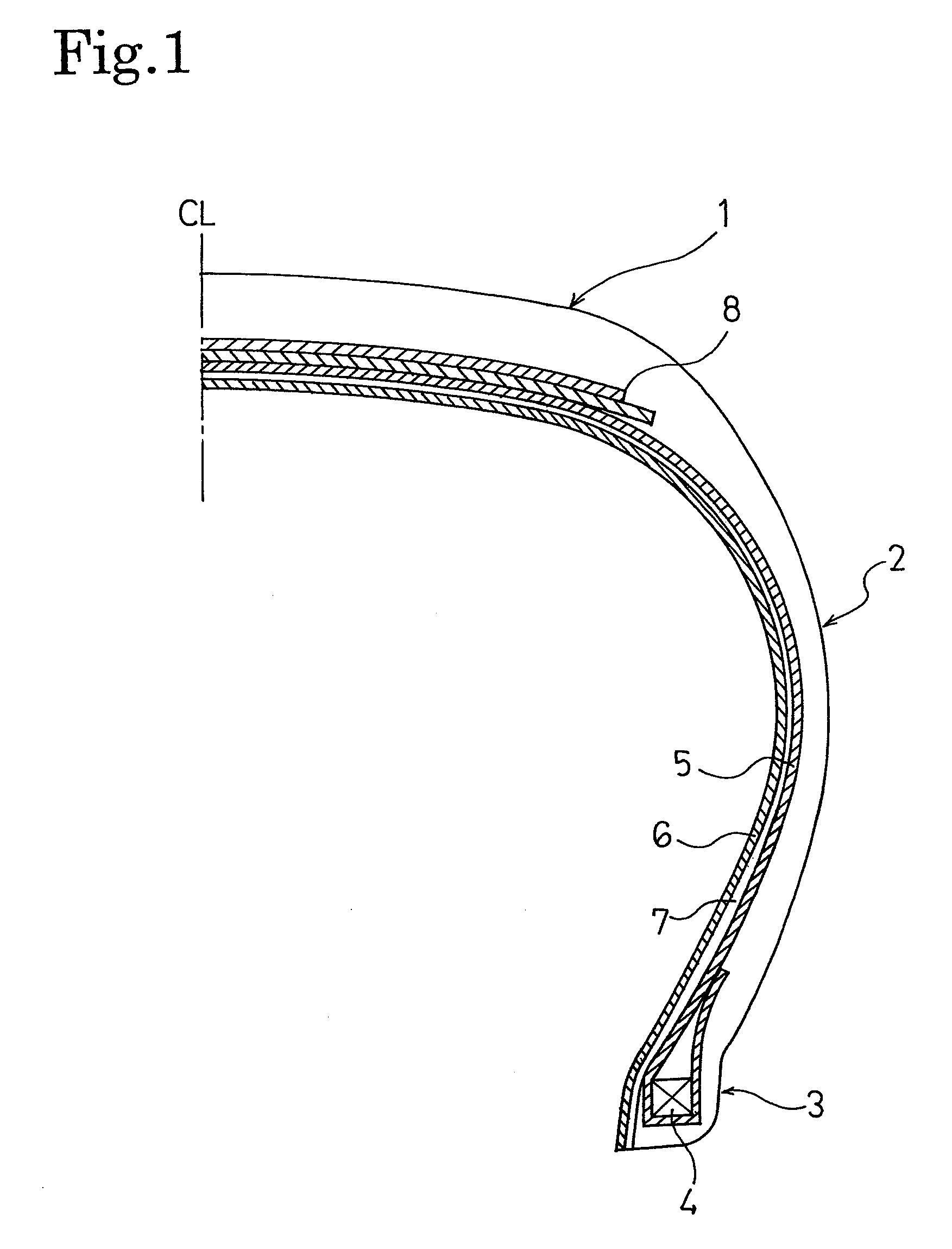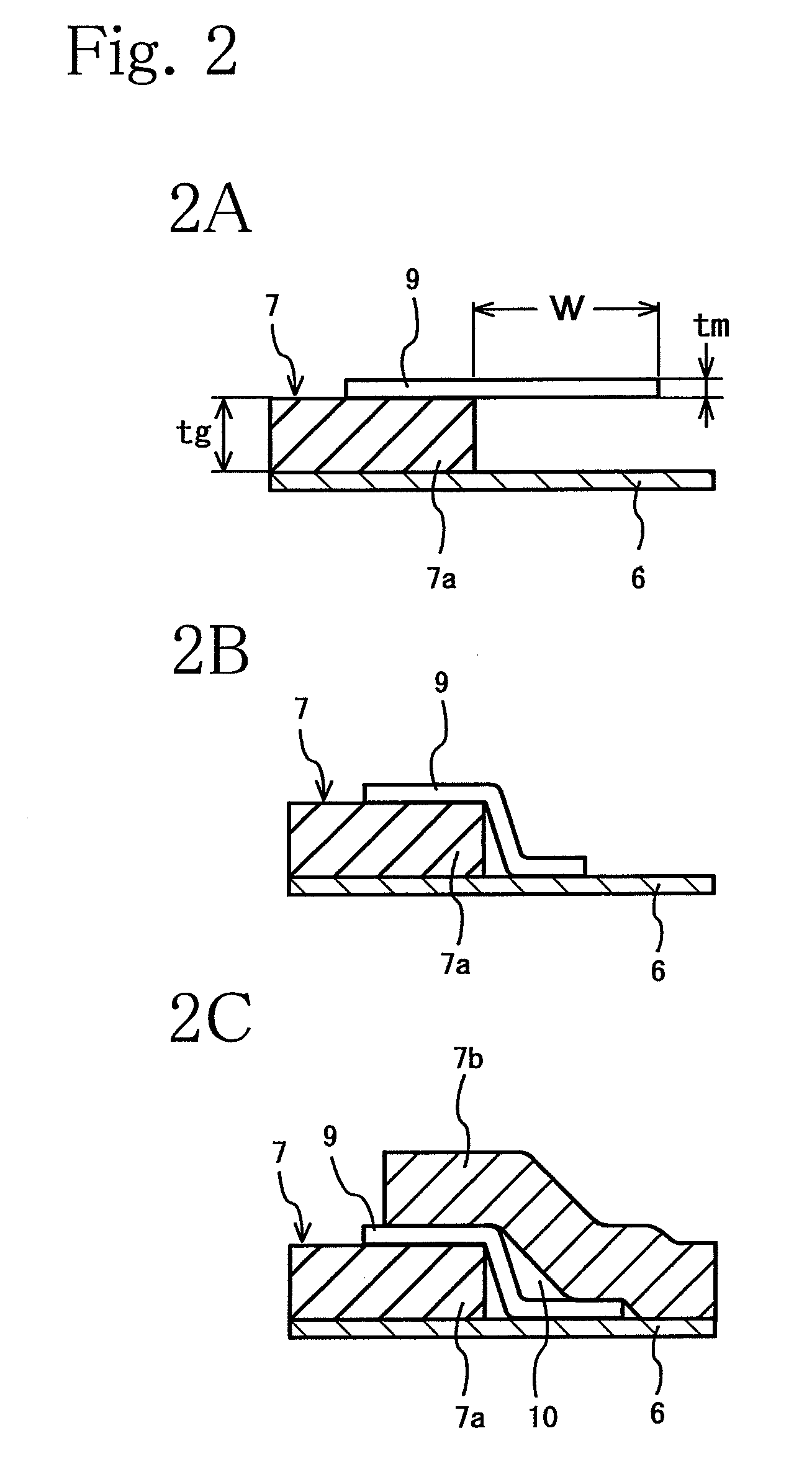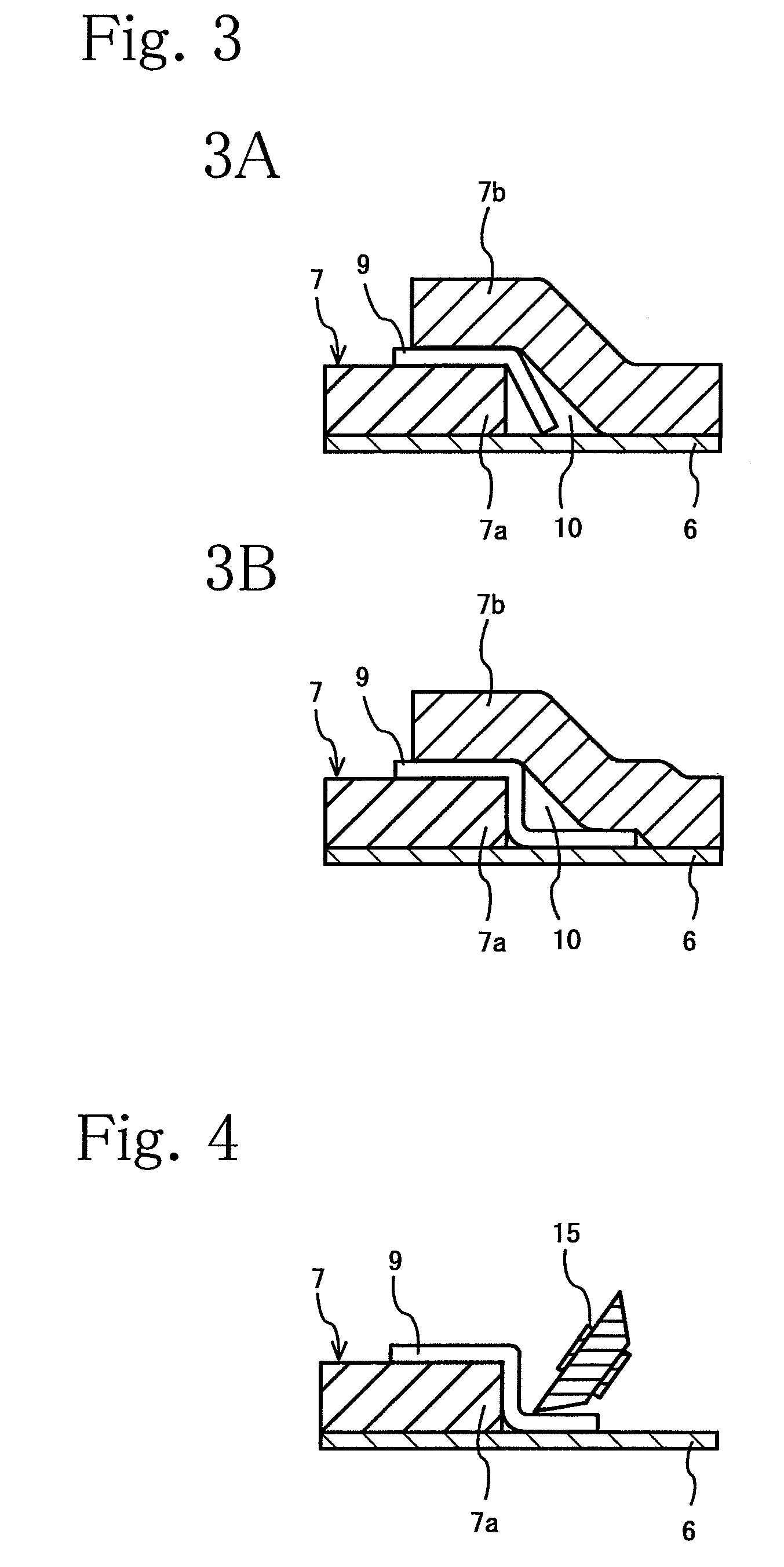Method of producing pneumatic tire
- Summary
- Abstract
- Description
- Claims
- Application Information
AI Technical Summary
Benefits of technology
Problems solved by technology
Method used
Image
Examples
examples 1 to 3
and Conventional Example
[0030]Four types of green tires (Examples 1 to 3 and Conventional Example) each having a tire size of 195 / 65R15 and a tire structure shown in FIG. 1 were formed. In each of the green tires, a cylindrical thermoplastic resin film (having a 0.2 mm thickness) was used as an air permeation prevention layer, and a tie-rubber sheet having a 0.7 mm thickness and a carcass layer were overlapped and spliced with the air permeation prevention layer. In addition, these green tires were formed to be different from one another, when the above described tie-rubber sheet was wound, as shown in Table 1, in whether or not an auxiliary rubber sheet was used, the length (W) of projection, and whether or not stitching was performed. Each of these four types of green tires was inserted into a curing mold and cured therein, and then was evaluated in terms of the size of void of trapped air in the green tire thus formed, whether or not blisters had occurred after the curing process...
PUM
| Property | Measurement | Unit |
|---|---|---|
| Thickness | aaaaa | aaaaa |
| Thickness | aaaaa | aaaaa |
| Thickness | aaaaa | aaaaa |
Abstract
Description
Claims
Application Information
 Login to View More
Login to View More - R&D
- Intellectual Property
- Life Sciences
- Materials
- Tech Scout
- Unparalleled Data Quality
- Higher Quality Content
- 60% Fewer Hallucinations
Browse by: Latest US Patents, China's latest patents, Technical Efficacy Thesaurus, Application Domain, Technology Topic, Popular Technical Reports.
© 2025 PatSnap. All rights reserved.Legal|Privacy policy|Modern Slavery Act Transparency Statement|Sitemap|About US| Contact US: help@patsnap.com



